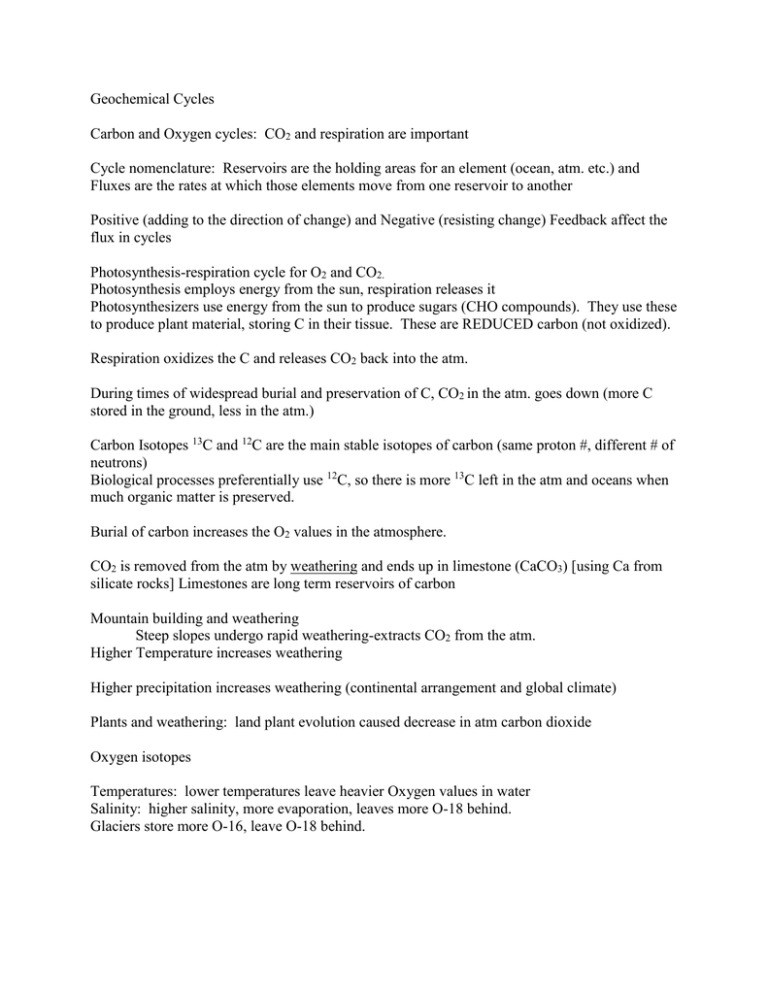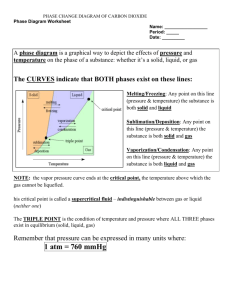Geochemical Cycles
advertisement

Geochemical Cycles Carbon and Oxygen cycles: CO2 and respiration are important Cycle nomenclature: Reservoirs are the holding areas for an element (ocean, atm. etc.) and Fluxes are the rates at which those elements move from one reservoir to another Positive (adding to the direction of change) and Negative (resisting change) Feedback affect the flux in cycles Photosynthesis-respiration cycle for O2 and CO2. Photosynthesis employs energy from the sun, respiration releases it Photosynthesizers use energy from the sun to produce sugars (CHO compounds). They use these to produce plant material, storing C in their tissue. These are REDUCED carbon (not oxidized). Respiration oxidizes the C and releases CO2 back into the atm. During times of widespread burial and preservation of C, CO2 in the atm. goes down (more C stored in the ground, less in the atm.) Carbon Isotopes 13C and 12C are the main stable isotopes of carbon (same proton #, different # of neutrons) Biological processes preferentially use 12C, so there is more 13C left in the atm and oceans when much organic matter is preserved. Burial of carbon increases the O2 values in the atmosphere. CO2 is removed from the atm by weathering and ends up in limestone (CaCO3) [using Ca from silicate rocks] Limestones are long term reservoirs of carbon Mountain building and weathering Steep slopes undergo rapid weathering-extracts CO2 from the atm. Higher Temperature increases weathering Higher precipitation increases weathering (continental arrangement and global climate) Plants and weathering: land plant evolution caused decrease in atm carbon dioxide Oxygen isotopes Temperatures: lower temperatures leave heavier Oxygen values in water Salinity: higher salinity, more evaporation, leaves more O-18 behind. Glaciers store more O-16, leave O-18 behind.






